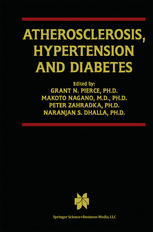

Most ebook files are in PDF format, so you can easily read them using various software such as Foxit Reader or directly on the Google Chrome browser.
Some ebook files are released by publishers in other formats such as .awz, .mobi, .epub, .fb2, etc. You may need to install specific software to read these formats on mobile/PC, such as Calibre.
Please read the tutorial at this link: https://ebookbell.com/faq
We offer FREE conversion to the popular formats you request; however, this may take some time. Therefore, right after payment, please email us, and we will try to provide the service as quickly as possible.
For some exceptional file formats or broken links (if any), please refrain from opening any disputes. Instead, email us first, and we will try to assist within a maximum of 6 hours.
EbookBell Team

5.0
58 reviewsThis volume is devoted to atherosclerosis, hypertension, and diabetes, three of the most important disease conditions in the world today. Nutritional intervention, cholesterol lowering agents, lipids themselves, particularly oxidized LDL, protein modification by ADP-ribose, bone marrow study, endothelial cell dysfunction, angiotensin, and the role of infection and inflammation are all discussed in the context of atherosclerotic cardiovascular disease.
The hypertension section focuses on factors that may be responsible for high blood pressure, such as genetic predisposition, vascular hyperplasia and remodeling, insulin resistance, neurological aspects such as hypothalamic peptides. Also discussed are the possible contributions of the cellular function of the endothelium, nutrition, kidney dysfunction, leptin, and the brain. Novel routes of drug delivery for treatment of hypertension is also a focus.
The risk factors and mechanisms responsible for diabetic vascular and cardiac dysfunction are discussed. Lipid profile changes and fibrinolysis in diabetic patients is detailed, along with adipogenesis, diabetic cardiomyopathy, energy metabolism in the diabetic heart, vanadate as an alternative to insulin, insulin resistance mechanisms, and neurotransmitters as targets for the prevention of cardiovascular disease and diabetes.